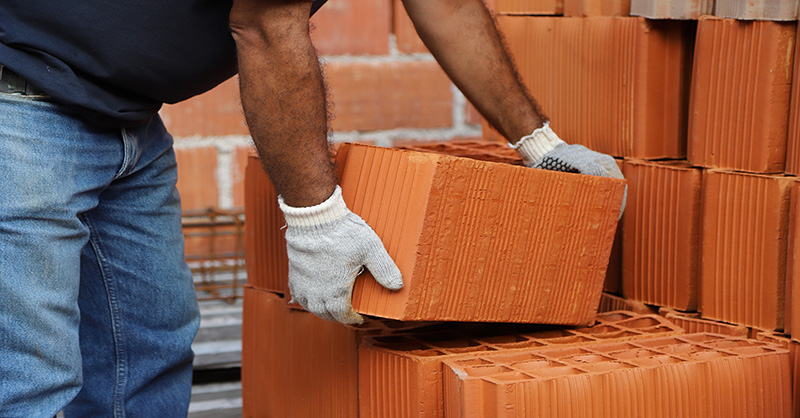Manual Material Handling Safety for Construction Sites

Manual material handling is a common and important task in the construction industry. Ensuring safety during these activities can help prevent injuries and maintain productivity.
The Importance of Safe Material Handling
Material handling on a construction site involves the process of moving, protecting, storing and controlling materials throughout the construction phase. Workers frequently need to manage materials, such as rebar, lumber, drywall, and concrete blocks. This includes activities, such as lifting, lowering, pushing, pulling, carrying or holding materials.
Potential Material Handling Hazards for Workers
The incorrect handling of materials can lead to accidents, including the following:
- Strain and Sprain Injuries: Lifting heavy objects or performing repetitive tasks can strain muscles and cause sprains. These injuries can occur when loads are too large or heavy to be safely moved.
- Falls: Tripping over materials or uneven surfaces can lead to falls.
- Impact Injuries: Sharp or rough-edged materials can cause cuts or bruises.
- Storage Hazards: Poorly stacked materials may collapse or fall.
- Ergonomic Stress: Awkward postures during lifting can strain the back, shoulders and wrists.
Manual Material Handling Safety Considerations
When it comes to manual material handling, whether it’s lifting or stacking, taking the right precautions can help ensure the safety and well-being of workers. Proper techniques and safety measures can significantly reduce the risk of injuries and create a safer work environment.
Proper Precautions When Lifting Materials
When manually handling construction materials, workers should take the following precautions:
- Use Proper Lifting Techniques
- Bend your knees and keep your back straight when lifting.
- Lift with your legs rather than your back.
- Avoid twisting while carrying heavy loads
- Wear Appropriate Personal Protective Equipment (PPE)
- Gloves can help protect hands and forearms from sharp edges.
- Eye protection can help prevent debris from entering the eyes.
- Steel-toed safety shoes or boots can help provide foot protection.
- Team Lifting
- For heavy or bulky items, work with a partner to distribute the load.
Safeguards for Stacking Materials
When stacking materials, pallets should be used to avoid restacking in case the material needs to be relocated in the future. Stack materials evenly and securely. Lock in bagged goods by staggering the bags in each row. Avoid stacking materials higher than necessary to prevent instability.
Alternative Material Handling Equipment Can Help
Consider using conveyors, cranes, slings and forklifts when appropriate. Safe crane operation can include regular inspections, proper signaling, and load limits. Employers must ensure the safe use of slings by inspecting them regularly and following manufacturer guidelines. Powered industrial truck (forklift) operators should receive training and follow safety protocols when using forklifts.
Manual Material Handling Training and Safety Awareness
Workers should receive adequate training on safe manual handling techniques and equipment use. Employers should help ensure effective training programs. Safe lifting training should include information on the following:
- Dangers associated with incorrect lifting
- Basic ergonomic principles
- Effective work habits, including proper lifting methods and the use of tools
- Identifying tasks that could cause discomfort or harm
- Signs of musculoskeletal disorders and the importance of early intervention
- Steps for reporting job-related injuries
Employees should stay informed about the latest safety regulations and best practices. Emphasize pre-shift stretch and flex exercises as well as lifting with good posture using the legs.
Always prioritize the safety of both workers and the overall construction project. By following these guidelines, we can reduce injuries and create a safer work environment.









